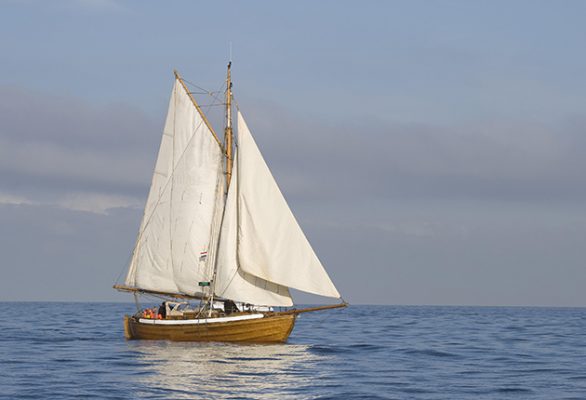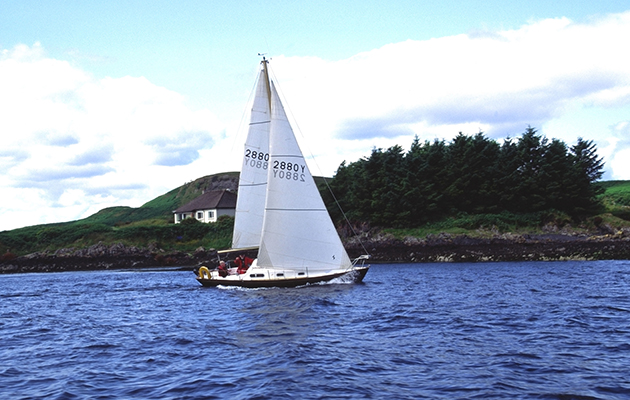With a tidal stream against you and a tired boat crew, should you push on or turn around? James Stevens answers your questions of seamanship
Should you push on with a tired boat crew?
James Stevens answers your questions of seamanship.
Question:
John is skipper of Grace, a traditional wooden 35ft gaff cutter.
He is on passage to the maritime festival at the Breton port of Douarnenez.
He has two boat crew who have done the trip before, but after sailing nonstop since yesterday, they are tired.
Currently he is 10 miles west of Roscoff beating into a westerly wind. It is drizzling and the visibility is about one mile.

Credit: Maxine Heath
Although the spring tide has helpfully swept them along the north Brittany coast, it is now slack water and will turn against them at a maximum rate of 2.6 knots.
It is 2100 hours and the light is fading.
John wants to press on because the event starts the next day and the idea of shellfish washed down with cider and Calvados is a strong incentive.
The next port ahead where he could stop and rest is L’Aberwrac’h, about 20 miles to windward.
Grace makes about 4 knots with her underpowered engine, and tacks through about 115º.
The forecast is WSW 4 to 5 veering NW soon. The alternative is to sail back with the tidal stream to Roscoff marina, or alternatively there is an anchorage and possible visitors’ mooring about the same distance inside the Ile de Batz.
The distance to Douarnenez from Roscoff is 80 miles and from L’Aberwrac’h 54 miles.
What should John do?
Answer:
This one depends on the morale of the crew.
If John continues, his ground track for the next 6 hours is going to be the nautical equivalent of mowing the lawn, going up and down and not making much progress.
It is going to take some leadership to keep up the crew’s enthusiasm in the dark and drizzle.
Once the tide starts turning in a favourable direction though, he will be in a good position to crack on.
The wind will veer in the next six to 12 hours, giving a free point of sail to Douarnenez.
Continues below…
How to sail to France from the UK
For home-waters sailors who are considering a holiday cruise to France, Ken Endean looks at the options for making a…
Masterclass: How to lead a happy crew
Toby Heppell gets advice on skippering with friends and family from Pete Goss, Dee Caffari and Conrad Humphreys
Shall we leave now, later, or not at all?
James Stevens answers your Questions of Seamanship. This issue - when is the best time to leave port when faced…
Tried and tested: tides planner app for iPads and iPhones
Duncan Kent thinks he has found the best Tides Planner App for iPads and iPhones yet
Making slow progress against the tide has been part of a day’s work for skippers of gaff-rigged boats for centuries and with the moderate forecast, Grace will not be in danger.

James Stevens, author of the Yachtmaster Handbook, spent 10 of his 23 years at the RYA as Training Manager and Yachtmaster Chief Examiner
It is, however, demoralising and John has to judge whether the will and endurance of the crew is going to impact on the safety of the yacht.
If it seems as if his crew are not going to keep going for another night, he has to sail back to Roscoff.
In one-mile visibility, his safest option is to sail to the north of Ile de Batz and either anchor, moor or enter the marina.
Realistically John should have thought of this and entered Roscoff earlier if necessary.
Once in Roscoff they either wait until the tide turns in their favour at 0300, or, as the crew is tired, take the afternoon tide to L’Aberwrac’h, and miss the start of the festival.








